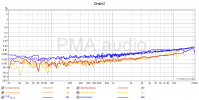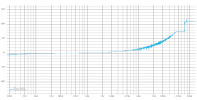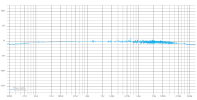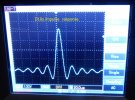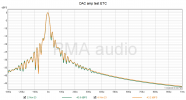DeltaWave v2.0.10, 2023-11-25T10:49:56.8690083+01:00
Reference: dacamp_orig.flac[L] 6660000 samples 96000Hz 24bits, stereo, MD5=f6d9e156164b3f8c0430695bedecc609
Comparison: dacamp_test2.flac[L] 6660000 samples 96000Hz 24bits, stereo, MD5=3629d861473e65d2dfeacb472f770840
Settings:
Gain:True, Remove DC:True
Non-linear Gain EQ:False Non-linear Phase EQ: False
EQ FFT Size:65536, EQ Frequency Cut: 0Hz - 0Hz, EQ Threshold: -500dB
Correct Non-linearity: False
Correct Drift:True, Precision:30, Subsample Align:True
Non-Linear drift Correction:True
Upsample:False, Window:Kaiser
Spectrum Window:Kaiser, Spectrum Size:32768
Spectrogram Window:Hann, Spectrogram Size:4096, Spectrogram Steps:2048
Filter Type:FIR, window:Kaiser, taps:262144, minimum phase=False
Dither:False bits=0
Trim Silence:True
Enable Simple Waveform Measurement: False
Discarding Reference: Start=0s, End=0s
Discarding Comparison: Start=0s, End=0s
Initial peak values Reference: -0.838dB Comparison: -0.773dB
Initial RMS values Reference: -15.423dB Comparison: -15.422dB
Null Depth=17.649dB
Trimming 192000 samples at start and 50 samples at the end that are below -90.31dB level
X-Correlation offset: 63 samples
Trimming 0 samples at start and 0 samples at the end that are below -90.31dB level
Drift computation quality, #1: Excellent (0.1μs)
Trimmed 19286 samples ( 200.895833ms) front, 38505 samples ( 401.09375ms end)
Final peak values Reference: -0.838dB Comparison: -0.764dB
Final RMS values Reference: -15.262dB Comparison: -15.256dB
Gain= -0.0068dB (0.9992x) DC=0 Phase offset=0.5557ms (53.347 samples)
Difference (rms) = -32.37dB [-32.45dBA]
Correlated Null Depth=43.94dB [37.09dBA]
Clock drift: 11.48 ppm
Files are NOT a bit-perfect match (match=0.09%) at 16 bits
Files are NOT a bit-perfect match (match=0%) at 24 bits
Files match @ 49.9984% when reduced to 6.23 bits
---- Phase difference (full bandwidth): 124.730519454468°
0-10kHz: 44.16°
0-20kHz: 87.05°
0-24kHz: 99.28°
Timing error (rms jitter): 889.5ns
PK Metric (step=400ms, overlap=50%):
RMS=-57.6dBFS
Median=-60.9
Max=-43.4
99%: -49.38
75%: -56.71
50%: -60.94
25%: -65.56
1%: -72.66
gn=1.00078010491943, dc=1.23446118539299E-06, dr=1.14844108469869E-05, of=53.3472015517
DONE!
Signature: ab38388952062b9b98aa6790d0559457
RMS of the difference of spectra: -76.2953684318295dB
DF Metric (step=400ms, overlap=0%):
Median=-23.5dB
Max=-13.9dB Min=-34.3dB
1% > -33.39dB
10% > -31.36dB
25% > -28.76dB
50% > -23.47dB
75% > -18.24dB
90% > -15.99dB
99% > -13.75dB
Linearity 2.1bits @ 0.5dB error
---- Phase difference (full bandwidth): 116.84289334647°
0-10kHz: 44.09°
0-20kHz: 86.72°
0-24kHz: 100.83°
Linearity 2.1bits @ 0.5dB error


